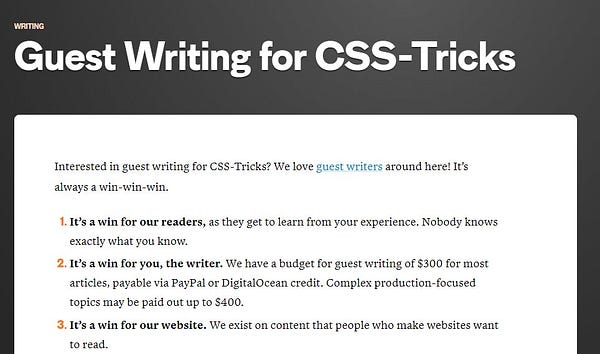Best practices while writing a technical article(Part 2) - Issue #34
Some of the best practices that I follow while writing technical articles.
Introduction
Hello guys,
I hope that you all doing well writing content either as an article or an as a post. I would like to thank you for supporting the newsletter by subscribing to it. I will be glad if you can share this newsletter online with your thoughts. You can mention me on Twitter(@surajondev), if you do.
To whoever is new to this, I discuss technical writing and social media presence as a developer. You can read the previous issue here:
Best practice while writing a technical article
Writing an article is an art that you can only master with time. Every tech author starts from zero. So, wherever you are start writing articles.
As I said, you will become at the thing with practice. But I am going to list down practices that will ease your process of writing a good article. This is the second part. You can read the first part here:
Use of canonical URL
There are multiple platforms where you can write technical articles. A few of them can be dev.to, hashnode, medium, hackernoon, and tealfeed. You should post on every platform to maximize your reach. But posting on multiple platforms will create lots of duplicates of the same content and eventually hammer the SEO. To avoid it, we should use a canonical URL.
A canonical URL points to the webpage that is the original copy of the article/webpage. Choose one post from one platform/website as the original source. Add that website post as the canonical URL to post on other platforms. Hence, you can post the same content on multiple platforms.
Posting on own website
Platforms are great for reach and impression. Making you, platform-independent is also important. As you can implement features as per your need.
I recommend using WordPress for the free plan and Ghost for the paid plan. I use my website, surajondev.com as the original website. Using canonical URL, I publish on other platforms.
Mention your contact info
You should mention your contact such as Email on the platforms where you write articles. In this way, any recruiter can hire for your technical writing skill.
Giving a gist of the article in the introduction
In the introduction section of the article, you should mention the topics that you are going to cover. This will set the mind of the readers with the information that they are going to get.
This can hook the reader in the article. Also, they don’t set any unrealistic expectations from the article.
Making your article more beginner-friendly
I see lots of articles that are straightforward without explaining much of the code. I can understand sometimes it’s hard to explain everything. But at least, you should give links to other resources for further explanation.
Making your articles beginner-friendly by explaining things from a perspective that might not know my keywords. This will also reach more developers.
Conclusion
This is it for Part 2. We have discussed the writing and publishing perspectives of writing articles. You apply much of this to general writing too.
I hope, this newsletter was helpful to you. Thank you for reading the issue. See you in the next issue.
100 Tips of Technical Writing on Twitter/LinkedIn
On Twitter and LinkedIn, I am currently posting one Technical Writing tip every day. This is being run under the hashtag #100tipsoftechnicalwriting.


Now, you won’t need to wait for a week to read. Also, you can also DM me for any help regarding technical writing. I will try my best to solve those.
You can follow me on the platform for more insight into technical writing.
Have you read our latest post?
Building a Video Player in React
As a web developer, I recommend you learn React. For learning, nothing is better than building a project with that. Let’s build a Video Player then.
How to Write an Awesome Readme
A good Readme will help other developers in understanding the project. They can use it as the original source of information for the project.
6 Awesome frameworks for Web Development
A list of awesome web development frameworks including frontend, backend, and CSS that will help you build faster web applications.








